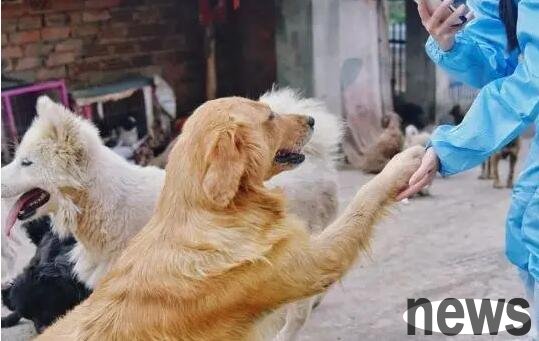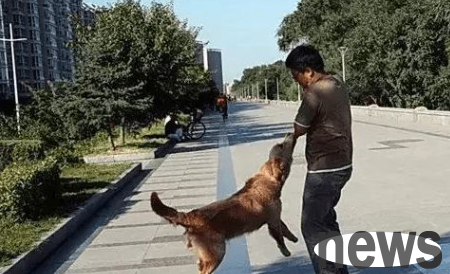Classroom teaching for pet raising beginners: simple and easy-to-learn puppy first aid measures!
Rescue means emergency rescue, which is the basic treatment before diagnosis, treatment and rescue. Its purpose is to protect life, relieve pain and discomfort, and to avoid permanent hazards and risks of disability.

Daily life, your cute pets will not be eliminated and encounter various emergencies, such as car accidents, bites, scalds, hospitalization, poisoning, epilepsy seizures, etc. It is very important to learn and train and grasp some first aid measures to solve emergency or risk conditions.
Concepts and actions in emergencies
1. Stay calm and make sure you or your puppy have all safety risks;
2. Make safeguards for your puppy and try to be gentle, especially when there are open wounds, fissures of limbs or all central nervous system diseases, especially when you are careful;
3. Contact the technical and professional medical staff in the pet clinic as soon as possible, inform the pet doctor of the puppy's current situation and obtain actual rescue proposals;
4. Can allow others to assist you in moving or transporting the injured puppy safely. If the puppy is small, you can put it in a small pet box or apply a solid cardboard. For puppies with large body shapes, you can carefully place the puppies on a blanket or coat and move them with a temporary stretcher truck made of hard raw materials, which is conducive to maintaining the head, neck and spine of the puppies that have been bitten or damaged;
5. Drive the puppies to a pet hospital.
Maintain the safety of puppy rescue staff

Most injured small animals will be anxious or unable to find their direction, and the puppy will be extremely nervous and anxious after being injured. You must stroke it gently and motivate it with a relieved sound. To ensure the safety of medical staff, the following countermeasures are recommended:
1. Mouth cover: You can simply make a mouth cover with a transmission belt, cotton socks, ropes or straps to avoid the puppy biting someone after being injured. Cats and dogs have only one whole body muscle that can open the jaw, so they will be relatively safe for people after closing the jaw. The puppy can inhale according to the nasal cavity when the nose is not damaged or blocked;
2. Closing: You can wrap the puppy with a packaging bag or a cotton towel on the body of an angry puppy. It must expose its head and not be pressed against the bronchial;
3. Fixed: If you suspect that the puppy's neck cord is damaged, you can fix it on the lying board with a strap or rope, and you need to pay attention to fixing the top of the head and the head and neck.
What are the signs of cardiac arrest in a pet dog?
Cardous arrest is a complicated whole-body reflection. This may include lower blood circulation system caused by severe trauma, bleeding or iron deficiency anemia, chronic heart failure, etc. (such as severe allergic symptoms and CCD), and a sudden drop in heart rate is fatal.
If treatment is not prompt and reasonable, cardiac arrest will cause irreversible damage to human organs. The clinical symptoms of cardiac arrest are dyspnea and arrhythmia. For example, the mucosa of teeth, mouth or lower eyelids will be pale, the front paws or ears will become colder, and nausea, vomiting, and trembling will occur.
What should I do if my puppy has a cardiac arrest?
Try to keep the puppy from making noise, and use blankets, cotton towels, and even newspapers to keep it warm. Please follow the procedures A, B, and C to perform rescue: A. Open the trachea to the outside world; B. Ensure smooth inhalation; C. Stable cardiopulmonary function and everything is normal.
1. Respiratory system: Try to eliminate the blockage of the puppy's respiratory system, such as grass, tree skills, balls, bones, etc.;
2. Safety tips: Your puppy will bite you in anxiety;
3. Inhalation: If the puppy does not inhale subconsciously, please try to gently press the puppy's breasts with the palm of your hand and check the heart rate or pulse rate. If it cannot be successful, please refer to the following method to give the puppy chest compressions (see below). If you are uncertain whether the human body of a injured puppy is physically and mentally healthy or the vaccination is within the effective period, please prevent the fluid or blood that the puppy metabolizes;
4. Cardiac and lung function: If you cannot test the heart rate or pulse rate, or have a slow heartbeat, please try to press the breasts of the cute pet with your hands to increase the lower half of the blood of the cute pet body and promote the flow into the human brain.
How to do chest compressions for puppies?
1. When you encounter the subconscious mind of the puppy, the first step is to ensure that the puppy's respiratory system is not blocked
2. Carefully pull the mouth out of the mouth;
3. Flex the top of the head and the head and neck. Small animals with significant trauma on the top of the head and neck do not need to do this position;
4. Carefully eliminate all dirt in the mouth that will block the inhalation;
5. Make a simple breathing mask to maintain the flexion and extension of the mouth and neck, prepare a disposable plastic cup or other similar objects in advance, poke the mouth at the bottom to ensure that the socket is close to the puppy's lips, and open the mouth at the bottom for you to blow and check the application;
6. Blow the air into the nose of the pet dog, and the frequency is to observe the expansion of the breast every 3 blows. If you don't see the enlarged breasts, please fix your head and neck again or check if there is a blockage in the respiratory system;
7. If you know that there is dirt in the respiratory system of the puppy, but you cannot see it immediately, please pick up the puppy, lean against your chest, and do five abdominal cavity presses in a group to squeeze the blockage (it is more difficult for large dogs to do this position);
8. Do at least 20 chest compressions for your puppy per minute;
9. You can also try to help it repair the concept in the way in the crowd, and each light press lasts for 10-30 seconds.
How to perform CPR for puppies?
When the pet doctor clears the puppy's respiratory system and carries out treatment, there are still no significant signs of life. At this time, try to press the heart..
1. When ensuring that there is no internal bleeding but there is bleeding, a doctor's assistant needs to help the pet dog promote blood circulation when assisting him in cardioresuscitation;
2. Let it maintain the right side sleeping position;
3. Check the heart rate or pulse rate for the puppy. The femoral artery pulse rate is located in the groin on the inner side of the hind leg, and the head and neck pulse rate is not as significant as the femoral artery pulse rate;
Classroom teaching for pet raising beginners: simple and easy-to-learn puppy first aid measures!
4. Bend the pet's left upper arm and pay attention to the part of the breast that touches the elbow;
5. Put one hand on the sternum and ribs, and press the breast with all your strength 3-5 times to cooperate with each other for two chest compressions. The frequency should be every 2 seconds, each time maintaining a light press of up to three seconds;
6. If the puppy is small, you can use one hand to gently press your breasts, put your four fingers on one side of the breasts and your thumb on the other side of the breasts.




